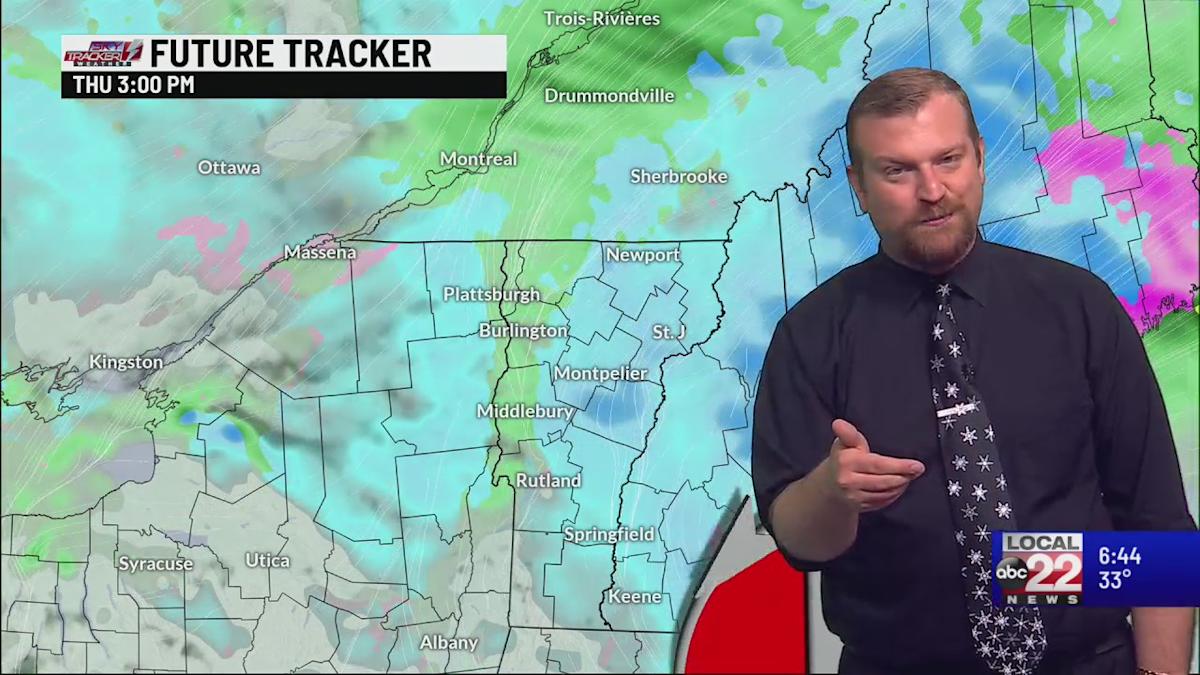Understanding The Developing Wintry Mix Of Rain And Snow

Table of Contents
The Science Behind the Wintry Mix
A wintry mix is a complex meteorological event resulting from a delicate balance of atmospheric conditions. The key ingredient is a significant temperature gradient in the atmosphere – warmer air aloft and colder air near the surface. This temperature profile dictates the type of precipitation that reaches the ground.
-
Temperature Gradients: The temperature at various altitudes plays a crucial role. If the air temperature above the surface is above freezing, precipitation begins as snow or rain. However, if there's a layer of cold air near the ground, the precipitation can transition into freezing rain or sleet.
-
Precipitation Types: The journey of a snowflake from the clouds to the ground significantly affects its form. If it falls through a layer of warm air, it melts into rain. However, if it encounters a layer of freezing air near the ground, it can refreeze into freezing rain or sleet, depending on the temperature and the rate of freezing.
-
Altitude and Geography: Altitude influences temperature. Higher elevations experience colder temperatures, increasing the likelihood of snow. Geography, too, plays a role. Areas near large bodies of water might experience more rain due to the moderating effect of the water, while inland areas may see more snow.
-
Key Factors Summarized:
- Warm air aloft, cold air at the surface: This is the fundamental condition for a wintry mix.
- Melting and refreezing: Snow melts in warmer air, and then refreezes into sleet or freezing rain as it falls through colder air.
- Wind and atmospheric pressure: These factors influence the movement and intensity of the storm, impacting the distribution of precipitation.
Identifying the Different Types of Winter Precipitation in a Mix
Accurately identifying the different types of precipitation within a wintry mix is crucial for taking appropriate safety measures.
-
Rain: Liquid water falling from the atmosphere. It's easily identifiable as clear or slightly cloudy water.
-
Snow: Frozen water crystals forming intricate snowflakes. Snow is generally fluffy and white.
-
Sleet: Raindrops that freeze into small, hard ice pellets before reaching the ground. Sleet bounces when it hits the ground.
-
Freezing Rain: Supercooled raindrops (liquid water below freezing point) that freeze instantly upon contact with surfaces. Freezing rain creates a transparent coating of ice on everything.
[Insert images here showing rain, snow, sleet, and freezing rain.]
The Dangers of a Wintry Mix and Safety Precautions
Wintry mixes pose significant dangers due to the combination of slippery conditions and the potential for power outages.
-
Slippery Surfaces: Ice from freezing rain or sleet renders roads, sidewalks, and driveways extremely slippery, leading to falls and traffic accidents.
-
Power Outages: The weight of ice accumulating on power lines can cause them to snap, leading to widespread power outages, particularly during an ice storm.
-
Travel Disruptions: Wintry mixes often result in flight cancellations, highway closures, and significant travel delays.
-
Increased Risk of Accidents: Slippery conditions increase the risk of car accidents, falls, and other injuries.
Safety Tips:
- Stay informed: Monitor weather forecasts and warnings closely. Use reliable sources like the National Weather Service.
- Drive carefully: Reduce speed, increase following distance, and avoid unnecessary travel.
- Prepare your home: Have flashlights, extra batteries, and a supply of food and water in case of a power outage.
- Protect yourself from the cold: Dress in warm layers and limit your time outdoors.
Predicting and Monitoring a Wintry Mix
Predicting a wintry mix accurately is challenging due to the complex interplay of atmospheric conditions. However, meteorologists use several tools to monitor and forecast these events.
-
Weather Radar: Radar provides real-time information on precipitation type and intensity.
-
Weather Satellites: Satellites give a broader view of the storm system, helping to track its movement and evolution.
-
Surface Observations: Ground-based weather stations collect data on temperature, precipitation, and wind speed, providing crucial information for forecasting.
-
Reliable Sources: Rely on official sources like the National Weather Service (or your country's equivalent) for accurate and up-to-date weather information and winter storm warnings.
Conclusion: Understanding and Preparing for the Next Wintry Mix
Understanding the formation, types, and potential dangers of a wintry mix of rain and snow is crucial for staying safe during winter weather events. The interplay of temperature gradients, precipitation types, and geographical factors create a hazardous situation demanding vigilance and preparedness. Staying informed about weather forecasts, taking necessary safety precautions, and having a winter weather preparedness plan in place will help you mitigate the risks associated with a wintry mix. Check your local wintry mix forecast regularly, practice safe winter driving techniques, and understand ice storm safety procedures to be prepared for the next weather event. Develop a comprehensive winter weather preparedness plan to ensure your safety and the safety of your family. Don't be caught off guard; prepare for the next wintry mix.

Featured Posts
-
 Complete Answers Nyt Mini Crossword April 25
May 20, 2025
Complete Answers Nyt Mini Crossword April 25
May 20, 2025 -
 Understanding The Drier Weather Forecast For Your Area
May 20, 2025
Understanding The Drier Weather Forecast For Your Area
May 20, 2025 -
 Hamiltonin Ferrarin Sopimus Toiveet Murskautuivat
May 20, 2025
Hamiltonin Ferrarin Sopimus Toiveet Murskautuivat
May 20, 2025 -
 Hercule Poirot Su Play Station 5 Prezzo Basso Meno Di 10 E Su Amazon
May 20, 2025
Hercule Poirot Su Play Station 5 Prezzo Basso Meno Di 10 E Su Amazon
May 20, 2025 -
 Formula 1 Yeni Sezonu Icin Geri Sayim Basladi
May 20, 2025
Formula 1 Yeni Sezonu Icin Geri Sayim Basladi
May 20, 2025
Latest Posts
-
 I Patriarxiki Akadimia Kritis Filoksenei Esperida Gia Ti Megali Tessarakosti
May 20, 2025
I Patriarxiki Akadimia Kritis Filoksenei Esperida Gia Ti Megali Tessarakosti
May 20, 2025 -
 Kancelaria Vs Home Office Vyhody A Nevyhody Pre Manazerov A Firmy
May 20, 2025
Kancelaria Vs Home Office Vyhody A Nevyhody Pre Manazerov A Firmy
May 20, 2025 -
 Syzitisi Gia Ti Megali Tessarakosti Stin Patriarxiki Akadimia Kritis
May 20, 2025
Syzitisi Gia Ti Megali Tessarakosti Stin Patriarxiki Akadimia Kritis
May 20, 2025 -
 Home Office Ci Kancelaria Analyza Preferencii Manazerov A Ich Zamestnancov
May 20, 2025
Home Office Ci Kancelaria Analyza Preferencii Manazerov A Ich Zamestnancov
May 20, 2025 -
 Blog Home Office Alebo Kancelaria 79 Manazerov Uprednostnuje Osobne Stretnutia
May 20, 2025
Blog Home Office Alebo Kancelaria 79 Manazerov Uprednostnuje Osobne Stretnutia
May 20, 2025
